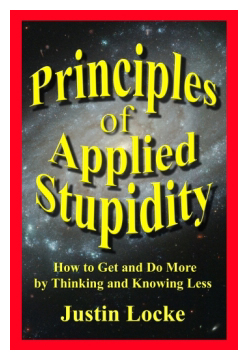So there’s this guy I know from high school, his name is James Parks, and he runs something that he calls the “Parksonian Institute.”
I don’t maintain much contact with the people I went to high school with, but for some reason, James found me on Linkedin and we have been chatting ever since. It has turned out to be an unusual bit of cosmic zap synchronicity.
For years now, I’ve been trying to articulate the management magic of the top conductors that I played for in my days in major orchestras. I have been explaining and labeling this as “mechanical versus artistic” approaches, but James gave me a much better label for it. He calls it “Newtonian versus quantum.” And I am hereby officially stealing that.
For example, when people ask me, “what does the conductor actually do?”, I always found myself stuck in this Newtonian versus quantum cultural conflict. Most people presume that the orchestra stays at rest until acted upon by the conductor’s force, but this did not explain what I had experienced.
Quantum thinking requires a certain amount of trust in things we can’t see with the naked eye. It also runs against management methods of hierarchical authority. We generally lose our quantum references around age 3 or four, when we are told that it is impossible for Santa Claus to fit down all those chimneys in one night.
In a major orchestra, when playing for a “great” conductor (i.e., someone who understands this alternate dimension of relating to the people being “managed), , the process cannot be defined or explained in mechanical terms. There is all this invisible energy swirling around . . . Quantum mechanics are an awful lot like this kind of magic. Things just happen instantaneously, in defiance of what we tend to think of as “possible.”
Creativity works this way as well. There are many mechanical approaches to creativity that people promulgate, but in my own experience, taking that kind of approach almost always ends up limiting you. Making that “leap of mind” cannot be done “from the elbows down.” There is an awful lot of trust, belief, and . . . dare I say it . . . “magic” . . . involved.
 I do explain some of this in my book “Principles of Applied Stupidity,” in which I show how Newtonian approaches to thinking and developing the mind don’t really explain many phenomena.
I do explain some of this in my book “Principles of Applied Stupidity,” in which I show how Newtonian approaches to thinking and developing the mind don’t really explain many phenomena.
I was awfully glad to discover James and his approach to this. I so rarely find anyone who “gets” what I’m talking about, and sometimes I start to think that I’m crazy. What is normal on the stage of Symphony Hall is incomprehensible to someone immersed in purely Newtonian/industrial references.
It is actually natural and effortless to think this way, it is how we were designed, it is how we are born and how children naturally think. Unfortunately, there’s a tremendous cultural legacy of teaching us to think in mechanical/Newtonian ways. Helping people make that transition is what I’m about, and I am thrilled to have found a kindred spirit in this endeavor.
© Justin Locke
